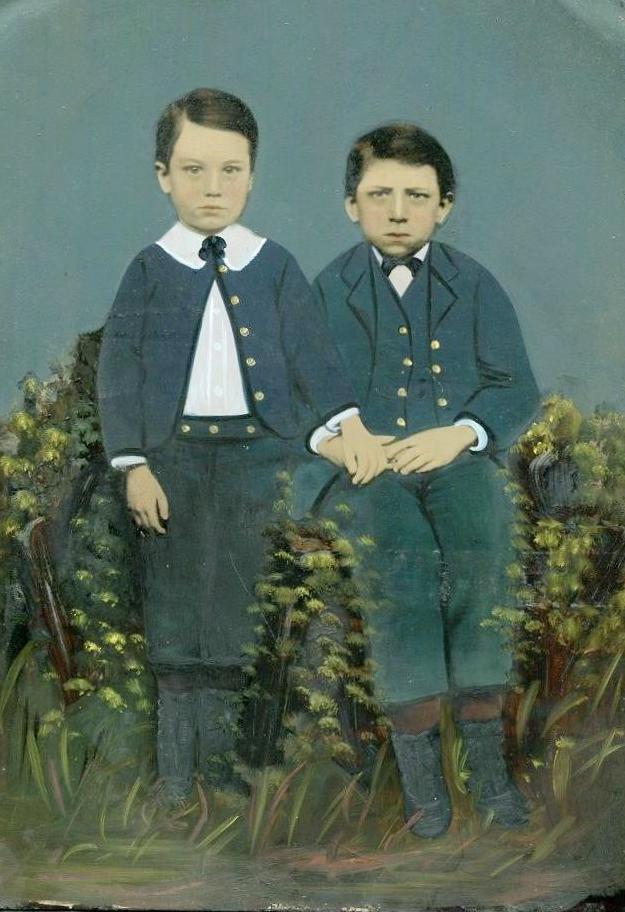
United States Boys' Suits: Specific Colors--Green Shades

Figure 1.-- The portrit is undated, but we would guess was taken in the 1870s. This colorized tin-type suggest that the unidentified American brothers had suits done in a dark green. The colors match, but may have not done so in reality. It was probably easier for the colorist to use the same paint. It is likely that both boys wore some green hue. Te boys wear suits reflecting their ages. The yonger boy wears a cut-away jacket suit. The older boy wears a sack suit with lapel jacker and vest. Both boys wear knee pants. Notice that mother apparently matched the green suits with green long stockings. The way the tintype is painted, it suggests that the older boy wore kneesocks rather than long stockings. But this is very unlikely in the 1870s, at least in America. The boys look to be about 6-10 years of age. The tintype measures 6 x 8 1/2 inhes, similar to a cabinet card.
|
|
We note various shades of green. Some could be dome with grey that toned down the green. We do noy see boys wearing bright green at least not until the post-World war II era. . we are not sure just how popular green was, Color images are limited in the 19th century. A best we can tell, howevr, green was a more popula color for suits than inthe 20th century. Here we have an example, wethink from the 1870s. Green was a kind of neutral color. Blues anf greys and to a lesser extent browns were popular suit colors in the 20th century. Green seems to have been an important color for suits in the 19th century. The shades see are muted, darker or greyish green shades. Both boys and girls could wear green. And destinct color conventiond were more of a 20th century than a 19th century phenomenon. Some information is available from period clothing catalogs. It is impossible to detect green in the vailable black-and-white photograhic record. As far as we know, they are indestingushable from colors like brown and blue. Each was done in various degrees of darkness. The best readily available sources are period catalogs which often desribe color. Vintage clothing is perhaps the best sources, but 19th century clothing collections are limited. There are also colorized photographs, which we think usually report the color accurately, but of course not the precise hue.
HBC

Navigate the Boys' Historical Clothing Web Site:
[Return to the Main U.S. suit color shade page]
[Return to the Main U.S. suit colors page]
[Return to the Main U.S. suits page]
[Introduction]
[Activities]
[Biographies]
[Chronology]
[Clothing styles]
[Countries]
[Bibliographies]
[Contributions]
[FAQs]
[Glossary]
[Images]
[Links]
[Registration]
[Tools]
[Boys' Clothing Home]
Created: 5:40 PM 7/6/2014
Last updated: 5:40 PM 7/6/2014



